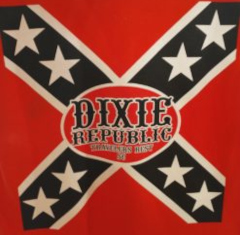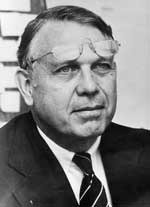Jefferson Davis in the Statuary Hall Collection, Washington D.C.
"The U.S. Capitol's Statuary Hall collection... abounds in Confederate heroes."
Virginia installed Robert E. Lee, the war’s most celebrated general, alongside George Washington.
Mississippi chose Jefferson Davis, the Confederate president, along with James Zachariah George, who signed Mississippi’s Ordinance of Secession and served as a colonel in the Confederate army.
Georgia enshrined Alexander H. Stephens, the Confederate vice president, who declared that "The cornerstone of the [Confederate] government rests upon the great truth that the Negro is not equal to the white man; that slavery -- subordination to the superior race -- is his natural and moral condition."
South Carolina installed John C. Calhoun, the pre-war champion of slavery and states’ rights, and Wade Hampton, the Confederate general whose postwar governorship marked the end of Reconstruction in the state and the beginning of 90 years of white supremacy.
North Carolina is represented by Zebulon Vance who, as governor during the Civil War, irked President Davis by insisting on putting North Carolina’s interests ahead of national interests. Its other representative is Charles Brantley Aycock, the turn-of-the-century governor whose claim to fame was that around 3,000 public schools were built during his administration.
Florida chose Gen. Kirby Smith, who participated in Braxton Bragg’s invasion of Kentucky and later commanded the Trans-Mississippi Department of the Confederate Army. Its other representative is, appropriately, Dr. John Gorrie, considered the fathere of air conditioning and refrigeration.
Louisiana chose Edward Douglass White, who served in the Confederate army and after the war was appointed to the U.S. Supreme Court by President Grover Cleveland. Its other representative is Huey “Kingfish” Long.
West Virginia chose John Kenna, who enlisted in the Confederate army and later became a powerful leader in the U.S. Senate. Its other representative is Francis Pierpont, who led the movement to create the state of West Virginia from the Virginia counties that refused to follow the Old Dominion into secession.
Texas: Sam Houston, hero of San Jacinto, who served as president of the republic and later as governor of the state, but opposed secession and declined to fight for either side in the Civil War.
Kentucky: Henry Clay, a slave-owner who helped craft the Missouri Compromise and the Compromise of 1850.
Missouri: Thomas Hart Benton, a slave-owner who opposed extension of slavery into the territories. He was a leading champion of “Manifest Destiny.”
See: http://us-civil-war.suite101.com/article.cfm/confederates_in_the_us_capitol











